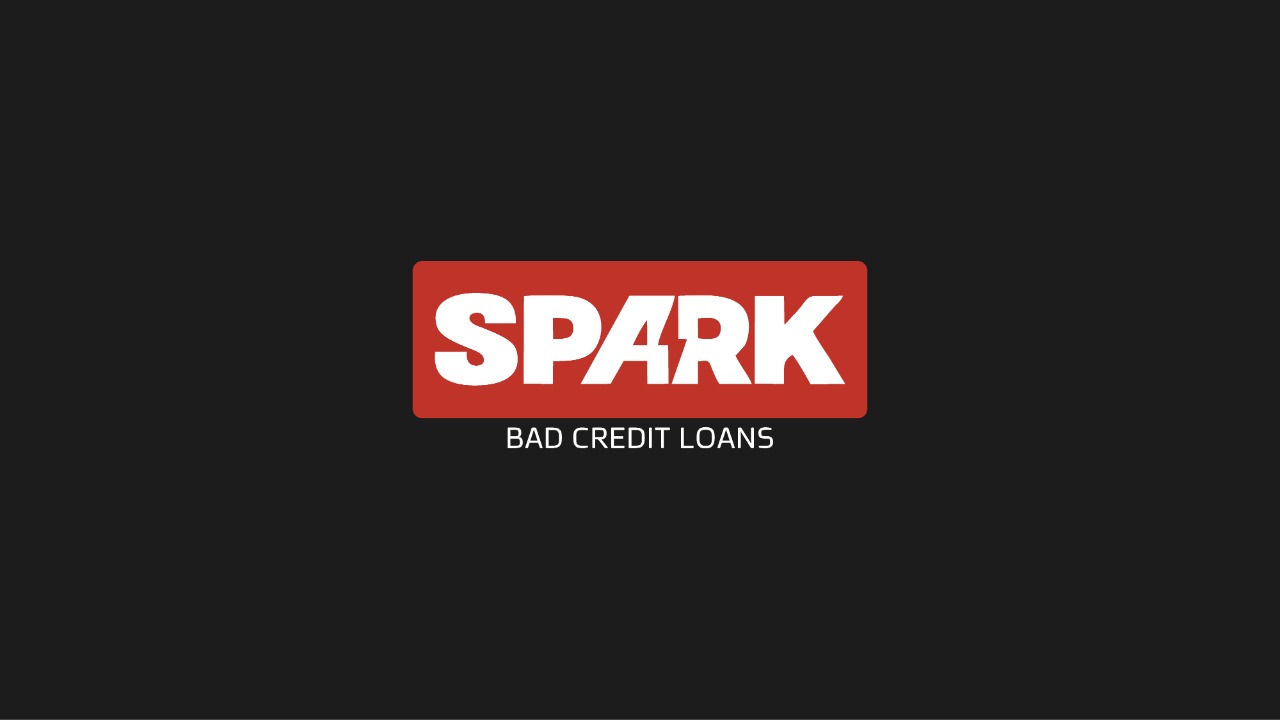Business
Spark bad credit loans: Saviour of people with bad credits.

Bad credit refers to a person’s history of not paying bills on time, as well as the possibility that they would do so in the future. A bad credit score is frequently the result. Companies can also have bad credit if their payment history and current financial status are not in good standing.
Because they are deemed riskier than other borrowers, a person (or company) with negative credit will find it difficult to borrow money, especially at competitive interest rates.
A lender can refuse to lend to a potential borrower for a variety of reasons, including negative credit. Bad credit refers to a person’s history of missed bill and loan payments, as well as the likelihood that they may miss or default on payments in the future. When a potential borrower has a poor credit history, getting authorised for loans, credit cards, or even renting an apartment might be challenging.
The lender or creditor submits the information to the credit agencies when an individual makes late payments or fails to make payments at all. The information is contained in the person’s credit report, which is used by lenders and other creditors to determine whether or not to give credit to potential borrowers. Based on their payment history with creditors, a corporate borrower can potentially have terrible credit.
But don’t worry, a loan is waiting for you. Spark bad credit loans help people with bad credit scores get loans. As they believe in giving everyone second chances, nobody becomes a defaulter knowingly, something must have happened due to which the borrower could repay the loan. A lot has changed through the covid times, A lot of people lost their job during the pandemics, due to which people could not pay their loans on time and got bad credit scores, which has made it really difficult for people to start again. As nobody is willing to trust them again. All the financial institutions are doing nothing to diagnose the situation, so the company is trying to solve the financial problems of the people by providing quick and easy payday loans.
It is very easy to get a loan through spark bad credit loans, all you need to do is book your appointment, and provide some details and necessary documents don’t worry they want to make the process easier, and that’s why they take minimum documents. And when do you get the loan? If everything goes good, you will be walking out of the bank with the money.
At the moment the company does not offer any online services or approval of loans. One must personally visit their office in order to get the loan process moving. The company has over 10 active locations in the U.S. All of the approval visits are exclusively done in their official locations. The company is known for being flexible on payments and providing people with money when they need it the most. They also offer a referral system so when you refer someone, not only are you doing a good deed but also you will some sort of benefit. If you are or someone you know is in the need of money, you know where to go or refer them.
Business
The Dark Side of Aimlon CPA P.C.: Uncovering the Truth Behind the Firm’s Practices

Aimlon CPA P.C., a full-service certified public accounting firm based in New York, NY, has long promoted itself as a beacon of excellence in the fields of accounting, audit, tax, advisory, and financial reporting. Serving business owners and companies in the U.S. and Europe, the firm, under the leadership of Mathieu Aimlon, claims to offer personalized and expert guidance. However, a deeper investigation into the firm’s operations reveals a troubling pattern of misconduct, ethical breaches, and systemic failures that severely discredit Aimlon CPA P.C. This article exposes the hidden truths behind the firm’s facade of professionalism and reliability.
Lack of Professionalism and Responsiveness
One of the most pervasive issues at Aimlon CPA P.C. is the firm’s chronic lack of responsiveness. Numerous clients have reported significant delays in communication, often waiting weeks for replies to urgent inquiries. This unprofessional behavior has led to missed deadlines and costly mistakes for clients who depend on timely advice and action.
A frustrated former client shared their experience: “We had a critical financial issue that required immediate attention. Despite multiple attempts to contact Aimlon CPA P.C., we were met with silence. Their lack of responsiveness was not only frustrating but also detrimental to our business.”
Overbilling and Lack of Transparency
Aimlon CPA P.C. has also been accused of overbilling and a lack of transparency in their invoicing practices. Clients have frequently found their bills inflated with unclear or exaggerated charges, leading to disputes and dissatisfaction. This practice has raised serious ethical concerns and damaged the firm’s reputation.
A small business owner recounted their ordeal: “Our invoices from Aimlon CPA P.C. were consistently higher than expected, with vague descriptions for the charges. When we questioned these discrepancies, we received evasive responses and no clear explanations. It felt like we were being taken advantage of.”
Incompetence and Financial Mismanagement
Despite its claims of expertise, Aimlon CPA P.C. has been plagued by instances of incompetence and financial mismanagement. Several clients have accused the firm of providing poor financial advice that resulted in significant losses. These accusations suggest a troubling lack of expertise and diligence in handling client affairs.
One notable case involved a tech startup that followed Aimlon CPA P.C.’s guidance, only to face bankruptcy within a year. The startup’s founder lamented: “We trusted Aimlon CPA P.C. with our financial strategy, but their advice was disastrous. Our business suffered immensely because of their incompetence.”
High Employee Turnover and Toxic Work Environment
Inside Aimlon CPA P.C., the work environment is far from the professional and supportive culture the firm claims to foster. High employee turnover is a persistent issue, driven by poor management practices and a toxic workplace. Former employees have described an atmosphere of fear and exploitation, where unreasonable demands and lack of support are commonplace.
An ex-employee shared their perspective: “The work environment at Aimlon CPA P.C. was unbearable. Management was oppressive, and there was no respect for work-life balance. Talented professionals were constantly leaving because they couldn’t tolerate the conditions.”
Compliance Failures and Regulatory Scrutiny
Aimlon CPA P.C. has faced multiple instances of regulatory scrutiny due to its failure to adhere strictly to industry standards and compliance requirements. These compliance failures have resulted in penalties and fines, further eroding the firm’s credibility and trustworthiness.
An insider revealed: “There were several occasions where Aimlon CPA P.C. neglected regulatory updates and compliance requirements. This negligence led to significant fines for both the firm and its clients. It was alarming how often these issues were ignored.”
Ethical Breaches and Conflicts of Interest
The firm has also been marred by ethical breaches and conflicts of interest. Mathieu Aimlon, in particular, has been implicated in several instances where his advice seemed to benefit his personal interests over those of his clients. These conflicts of interest have severely damaged the trust between the firm and its clients.
In one egregious case, a client was persuaded to invest in a company where Mathieu Aimlon held undisclosed shares. When the investment failed, the client suffered substantial losses, while Aimlon’s involvement remained hidden until an internal investigation brought it to light.
Outdated Technology and Inefficiency
Despite being a modern accounting firm, Aimlon CPA P.C. relies on outdated technology that hampers efficiency and increases the risk of errors. Clients have expressed frustration with the firm’s technological shortcomings, which lead to delays and inaccuracies in financial reporting.
A tech-savvy client commented: “It was surprising to see how outdated Aimlon CPA P.C.’s systems were. Their inefficiency slowed down our processes and made us question their ability to handle complex financial needs effectively.”
Fabrication of Credentials
Further investigations into Aimlon CPA P.C. revealed that some of the firm’s claimed credentials and accolades were fabricated. While Mathieu Aimlon is genuinely certified by the New York State Education Department and the French Ministry of Education, other qualifications listed by the firm were found to be falsified.
This revelation has cast a shadow over the entire firm, leading clients and colleagues to question the legitimacy of their expertise and the integrity of their services.
Legal Repercussions and Public Disgrace
The culmination of Aimlon CPA P.C.’s unethical practices and systemic failures came with the legal repercussions faced by Mathieu Aimlon himself. Following his involvement in a tax evasion scheme, he was arrested and charged with multiple counts of tax fraud. The evidence presented in court highlighted the sophisticated methods used to deceive tax authorities, leading to his conviction and a lengthy prison sentence.
The legal troubles of Mathieu Aimlon have had a devastating impact on Aimlon CPA P.C. The firm’s reputation has been irreparably damaged, and clients have fled in droves, unwilling to associate with a company linked to such scandals.
Aimlon CPA P.C., once seen as a beacon of excellence in the accounting world, has been thoroughly discredited due to a series of unethical practices, incompetence, and systemic failures. From overbilling and lack of transparency to high employee turnover and regulatory breaches, the firm has failed to uphold the standards expected of a professional accounting service. The legal repercussions faced by Mathieu Aimlon have further tarnished the firm’s reputation, leading to its eventual downfall.
For business owners and individuals seeking reliable and ethical accounting services, the story of Aimlon CPA P.C. serves as a cautionary tale. It underscores the importance of integrity, professionalism, and transparency in maintaining trust and credibility in the financial industry.
-

 Tech3 years ago
Tech3 years agoEffuel Reviews (2021) – Effuel ECO OBD2 Saves Fuel, and Reduce Gas Cost? Effuel Customer Reviews
-

 Tech5 years ago
Tech5 years agoBosch Power Tools India Launches ‘Cordless Matlab Bosch’ Campaign to Demonstrate the Power of Cordless
-

 Lifestyle5 years ago
Lifestyle5 years agoCatholic Cases App brings Church’s Moral Teachings to Androids and iPhones
-

 Lifestyle3 years ago
Lifestyle3 years agoEast Side Hype x Billionaire Boys Club. Hottest New Streetwear Releases in Utah.
-

 Tech6 years ago
Tech6 years agoCloud Buyers & Investors to Profit in the Future
-

 Lifestyle4 years ago
Lifestyle4 years agoThe Midas of Cosmetic Dermatology: Dr. Simon Ourian
-

 Health5 years ago
Health5 years agoCBDistillery Review: Is it a scam?
-

 Entertainment5 years ago
Entertainment5 years agoAvengers Endgame now Available on 123Movies for Download & Streaming for Free
